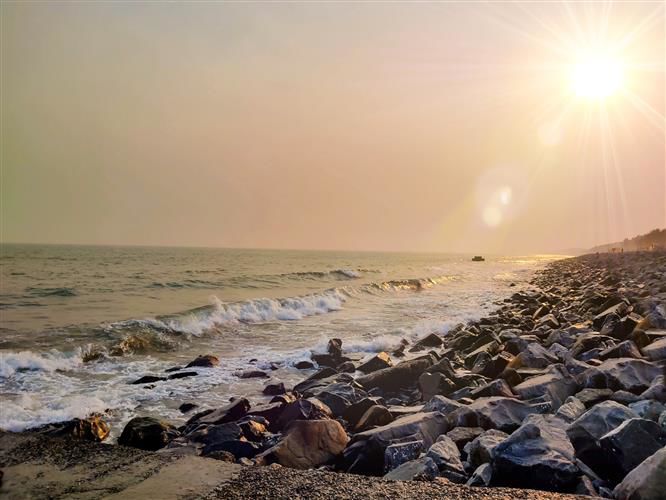
Photo for representational purpose only. iStock
New Delhi, April 28
The Indian Ocean is expected to experience surface warming of 1.4 degrees Celsius to 3 degrees Celsius between 2020 and 2100, which will push it into a near-permanent heatwave state, intensify cyclones, affect the monsoon, and lead to a rise in sea levels, according to a new study.
The study, led by Roxy Mathew Koll, a climate scientist at the Pune-based Indian Institute of Tropical Meteorology (IITM), showed that marine heatwaves (periods of abnormally high ocean temperatures) are projected to increase from 20 days per year (during 1970-2000) to 220-250 days per year, pushing the tropical Indian Ocean into a basin-wide near-permanent heatwave state by the end of the 21st century.
Marine heatwaves cause habitat destruction due to coral bleaching, seagrass destruction and loss of kelp forests, affecting the fisheries sector adversely. They also lead to the rapid intensification of cyclones.
The rapid warming in the Indian Ocean is not limited to the surface. The heat content of the Indian Ocean, from the surface to a depth of 2,000 meters, is currently increasing at the rate of 4.5 zetta-joules per decade and is predicted to increase at a rate of 16-22 zetta-joules per decade in the future, the study titled “Future projection for the tropical Indian Ocean” said.
“The future increase in heat content is comparable to adding the energy equivalent of one Hiroshima atomic bomb detonation every second, all day, every day, for a decade,” Koll said.
The maximum warming will occur in the northwestern Indian Ocean, including the Arabian Sea, while there will be reduced warming off the Sumatra and Java coasts.
Amid the accelerated ocean warming, the seasonal cycle of surface temperatures is projected to shift, which could increase extreme weather events over the Indo-Pacific region.
While the maximum basin-average temperatures in the Indian Ocean ranged from 26 degrees Celsius to 28 degrees Celsius throughout the year during 1980-?2020, the minimum temperatures by the end of the 21st century will be between 28.5 degrees Celsius and 30.7 degrees Celsius year-round, under a high emission scenario.
Sea surface temperatures above 28 degrees Celsius are generally conducive to deep convection and cyclogenesis. Heavy rainfall events and extremely severe cyclones have already increased since the 1950s and are projected to increase further with increasing ocean temperatures, the authors said.
The increased ocean heat could also lead to a rise in sea level. Thermal expansion of water contributes to more than half of the sea level rise in the Indian Ocean, which is larger than the contribution from glacier and sea-ice melting.
The Indian Ocean Dipole, a phenomenon that affects the monsoon and cyclone formation, is also predicted to change. The frequency of extreme dipole events is predicted to increase by 66 per cent whereas the frequency of moderate events is to decrease by 52 per cent by the end of the 21st century.
The authors of the study predicted that ocean acidification will intensify, with surface pH decreasing from a pH above 8.1 to below 7.7 by the end of the century. Surface chlorophyll and net primary productivity are also predicted to decline, with the strongest decrease of about 8-10 per cent in the western Arabian Sea.
“The projected changes in pH may be detrimental to the marine ecosystem since many marine organisms, particularly corals and organisms that depend on calcification to build and maintain their shells, are sensitive to the change in ocean acidity. The change may be easier to fathom when we realise that a 0.1 fall in human blood pH can result in rather profound health consequences and multiple-organ failure,” Koll said.
Bordered by 40 countries, and home to a third of the global population, changes to climate in the Indian Ocean region have major societal and economic impacts.
Currently, the Indian Ocean and its surrounding countries stand out globally as the region with the highest risk of natural hazards, with coastal communities vulnerable to weather and climate extremes.
Join Whatsapp Channel of The Tribune for latest updates.



























